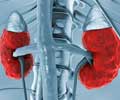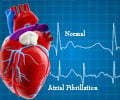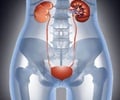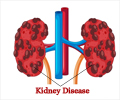The Kidney Disease: Improving Global Outcomes (KDIGO) Conference on CKD & Arrhythmias was held in Berlin in 2016. The conclusions of the conference were recently published.
Highlights:
- The Kidney Disease: Improving Global Outcomes (KDIGO) Conference on CKD & Arrhythmias held on October 2016 in Berlin looked into several issues related to cardiac arrhythmias in chronic kidney disease patients.
- The conclusions of the conference were recently published. Several questions on the topic remain to be answered through additional clinical trials.
Some of the salient features of the report are as below:
In patients with reduced kidney function with an estimated creatinine clearance of 30–50 mL/min, the effectiveness of DOACs like apixaban and edoxaban appears to be similar to warfarin, but they appear to be safer since they are less commonly associated with brain bleeds and other major bleeding events. The conference did not recommend a specific DOAC for CKD patients with atrial fibrillation. Also, periodic monitoring of the kidney function, possibly half-yearly or yearly, was recommended so that the dose of the DOAC can be adjusted accordingly.
The conference attendees suggested the use of a lower dose of apixaban 2.5 mg orally twice daily in CKD grade 5 (including those on dialysis) instead of the 5 mg twice daily as approved by the USFDA to reduce the risk of bleeding until more safety data are available. Measures to reduce bleeding in these patients while undergoing a procedure or a surgery may include reducing the dose of heparin with dialysis, the use of citrate locks for catheters, the use of medications to prevent digestive tract bleeding, tight control of blood pressure, and discontinuation of antiplatelet drugs if clinically reasonable.
The use of antiplatelet drugs (which include drugs like aspirin and ticlopidine) for stroke prevention in patients with CKD grades 4 or 5 was discouraged.
Rhythm control, usually using direct current cardioversion (DCCV) may be preferred in patients in whom controlling the rate is difficult, younger patients, patients with tachycardia-mediated cardiomyopathy, in hemodialysis patients with hemodynamic instability during dialysis sessions, for the first episode of atrial fibrillation, atrial fibrillation that is precipitated by an acute illness or surgery, or due to patient preference. Unless contraindicated, the patients should continue the use of anticoagulation depending on their stroke risk in both rate control and rhythm control treatments.
Weight loss and exercise can help to reduce the chances of atrial fibrillation in CKD patients.
Patients with CKD are at an increased risk for sudden cardiac death. For patients undergoing hemodialysis, the potassium concentration of the dialysis solution and the schedule of hemodialysis treatments influence the risk of sudden death. Though ICD (implantable cardioverter defibrillator) has been used to prevent sudden cardiac death, its benefit appears to lessen as the kidney function reduces.
Since the heart rhythm is affected by blood potassium levels, the concentration of the potassium in the blood has to be maintained to reduce the risk of cardiac events. Drugs that affect potassium levels should be avoided where possible. High blood potassium levels in CKD patients can be treated with restriction of potassium intake in the diet, correction of acidosis, increasing sodium intake and the administration of loop diuretics (which cause potassium loss). Medications like cation-exchange resin kayaexalate, calcium-resin resonium, the potassium-binding polymer patiromer, and the potassium trap ZS-9 can be used but more information is required about their safety and efficacy following kidney transplantation, in patients with Type IV renal tubular acidosis, or in patients taking drugs called calcineurin inhibitors. Low potassium levels can be treated with potassium-sparing diuretics and potassium supplements.
Further studies are required to address several unanswered questions and improve the cardiovascular outcomes in patients with chronic kidney disease.
Reference:
- Turakhia MP et al. Chronic kidney disease and arrhythmias: conclusions from a Kidney Disease: Improving Global Outcomes (KDIGO) Controversies Conference.European Heart Journal, ehy060, https://doi.org/10.1093/eurheartj/ehy060















